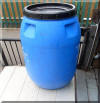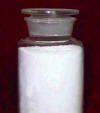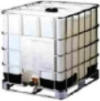| Anmol Chemicals is the pioneer manufacturers of Zinc Chloride, Pharmaceutical Excipients Fragrance & Flavor chemicals in India. We offer Halal and Kosher Zinc Chloride made in an ISO9001, ISO22000 (FSSC22000) cGMP and GLP certified facility. Our group has several manufacturing facilities spread across the world, supported by toll manufacturers and representatives in UAE, Europe, Africa, USA, China and has several associated manufacturing facilities spread across India. All the Information on Physics, Chemistry, Applications, Uses and Technology on Manufacture of Zinc Chloride is in these pages. |
| The units have one or more of the certifications like FDA GMP, ISO 9001, ISO 22000, HACCP, REACH, Kosher & Halal |
Zinc Chloride Solution SDS GHS, MSDS Sheet
Zinc Chloride Anhydrous Solution BP USP IP ACS AR Analytical Reagent Manufacturers
For MSDS Sheet Click
Zinc Chloride Solution SDS GHS, MSDS Sheet, Material Safety Data Sheet
1. Product Identification
Synonyms: Zinc Chloride Lye
CAS No.: 7646-85-7
Molecular Weight: 136.30
Chemical Formula: ZnCl2 with water
Recommended usage: Industrial Manufacturing.
2. Hazards Identification
GHS, Globally Harmonized System Classification in accordance with 29 CFR 1910
Classification according to Regulation (EC) No 1272/2008
Acute Toxicity 4
Skin corrosion/irritation Category 2
Serious eye damage/eye irritation Category 1
Hazardous to the aquatic environment, long-term hazard Category 2
Labeling according to GHS & Regulation (EC) No 1272/2008
GHS Label Elements Aquatic Toxicity |
GHS Label Elements Corrosive |
Signal Words: Danger
Hazard statements:
H302 Harmful if swallowed.
H315 - Causes skin irritation.
H319 Causes serious eye irritation.
H411 Toxic to aquatic life with long lasting effects.
Precautionary statements:
P262: Do not get in eyes, on skin, or on clothing.
P264: Wash skin thoroughly after handling.
P270: Do not eat, drink or smoke when using this product.
P273 Avoid release to the environment.
P280: Wear protective gloves/protective clothing/eye protection/face protection.
P310: Immediately call a POISON CENTER or doctor/ physician.
P314: Get Medical advice/attention if you feel unwell.
P330: Rinse mouth.
P301+P312: IF SWALLOWED: Call a POISON CENTER or doctor/physician if you feel unwell.
P302+P352: IF ON SKIN: Wash with soap and water.
P305+ P351 + P338 IF IN EYES: Rinse cautiously with water for several minutes. Remove contact lenses, if present and easy to do. Continue rinsing.
P332+P313: If skin irritation occurs: Get medical advice/attention.
P337+P313 If eye irritation persists: Get medical advice/ attention.
P360: Rinse immediately contaminated clothing and skin with plenty of water before removing clothes.
P362:Take off contaminated clothing and wash before reuse.
P391: Collect spillage.
P404: Store in a closed container.
P501 Dispose of contents/ container to an approved waste disposal plant.
Classification according to EU Directives 67/548/EEC or 1999/45/EC:
Hazard Symbols: C N
Risk Phrases: 34 50/53
OSHA Hazards: Target Organ Effect, Toxic by ingestion, Corrosive.<> Target Organs: Liver, Kidney.
3. Composition/Information on Ingredients
Ingredient: Zinc Chloride
CAS No.: 7646-85-7
Percent: 30-70% Zinc Chloride in 67-27% water
4. First Aid Measures
Inhalation: Remove to fresh air. If not breathing, give artificial respiration. If breathing is difficult, give oxygen. Get medical attention immediately.
Ingestion: If swallowed, DO NOT INDUCE VOMITING. Give large quantities of water. Never give anything by mouth to an unconscious person. Get medical attention immediately.
Skin Contact: Immediately flush skin with plenty of water for at least 15 minutes while removing contaminated clothing and shoes. Get medical attention immediately. Wash clothing before reuse. Thoroughly clean shoes before reuse.
Eye Contact: Immediately flush eyes with plenty of water for at least 15 minutes, lifting lower and upper eyelids occasionally. Get medical attention immediately.
5. Fire Fighting Measures
Fire: Zinc chloride is not considered to be a fire hazard.
Explosion: Zinc Chloride is not considered to be an explosion hazard.
Fire Extinguishing Media: Use water spray, alcohol-resistant foam, dry chemical or carbon dioxide. Use means suitable for extinguishing surrounding fire.
Special Information: Use protective clothing and breathing equipment appropriate for the surrounding fire over.
NFPA (Perceived): Health-3 / Fire-0 / Reactivity-0
6. Accidental Release Measures
Ventilate area of leak or spill. Keep unnecessary and unprotected people away from area of spill. Wear appropriate personal protective equipment as specified in Section 8. Spills: Pick up and place in a suitable container for reclamation or disposal, using a method that does not generate dust. Avoid release to the environment. US Regulations (CERCLA) require reporting spills and releases to soil, water and air in excess of reportable quantities. The toll free number for the US Coast Guard National Response Center is (800) 424-8802.
7. Handling and Storage
Keep in a well closed container stored under cold to warm conditions, 2 to 40 C, (36 to 104F). Protect it against physical damage. Containers may be hazardous when empty since they retain product residues (dust, solids); observe all warnings and precautions listed for the product.
8. Exposure Controls/Personal Protection
Airborne Exposure Limits:
OSHA Permissible Exposure Limit (PEL):
1 mg/m3 (TWA) 8H, as fume.
ACGIH Threshold Limit Value (TLV):
1 mg/m3 (TWA); 2 mg/m3 (STEL) for fume
Ventilation System: A system of local and/or general exhaust is recommended to keep employee exposures below the Airborne Exposure Limits. Local exhaust ventilation is generally preferred because it can control the emissions of the contaminant at its source, preventing dispersion of it into the general work area. Please refer to the ACGIH document, Industrial Ventilation, A Manual of Recommended Practices, most recent edition, for details.
Personal Respirators (NIOSH Approved): If the exposure limit is exceeded, a full face piece respirator with dust/mist filter may be worn up to 50 times the exposure limit or the maximum use concentration specified by the appropriate regulatory agency or respirator supplier, whichever is lowest. For emergencies or instances where the exposure levels are not known, use a full-face piece positive-pressure, air-supplied respirator. WARNING: Air purifying respirators do not protect workers in oxygen-deficient atmospheres.
Skin Protection: Wear impervious protective clothing, including boots, gloves, lab coat, apron or coveralls, as appropriate, to prevent skin contact.
Eye Protection: Use chemical safety goggles and/or full face shield where dusting or splashing of solutions is possible. Maintain eye wash fountain and quick-drench facilities in work area.
9. Physical and Chemical Properties
Appearance: The solution is clear to off-white liquid. Zinc chloride is white crystalline granules.
Odor: It is odorless.
Solubility: Soluble 423 in water
Density: The density depends on water content. Specific gravity of Zinc Chloride is 2.91
pH: 4
% Volatiles by volume @ 21C (70F): 0
Boiling Point: NA
Melting Point: NA
Vapor Density (Air=1): NA.
Vapor Pressure (mm Hg): NA
Evaporation Rate (BuAc=1): NA.
10. Stability and Reactivity
Stability: The solution is stable under ordinary conditions of use and storage.
Hazardous Decomposition Products: When heated to decomposition it emits toxic fumes of chlorine and zinc oxide.
Hazardous Polymerization: Will not occur.
Incompatibilities: Cyanides and sulfides, powdered zinc. When mixed with potassium, a weak explosion will occur on impact.
Conditions to Avoid: Incompatibles.
11. Toxicological Information
Oral rat LD50: 350 mg/kg.
Investigated as a tumorigen, mutagen, reproductive effector.
Carcinogenicity: Not listed by ACGIH, IARC, NTP, or CA Prop 65.
12. Ecological Information
Toxicity to fish: LC50 - Cyprinus carpio (Carp) - 0,4 - 2,2 mg/l - 96,0 h for ZnCl2
Toxicity to daphnia and other aquatic invertebrates: EC50 - Daphnia magna (Water flea) - 0,2 mg/l - 48 h for ZnCl2
Environmental Fate: No information found.
Environmental Toxicity: Dangerous to the environment. Very toxic to aquatic organisms; may cause long term adverse effects in the aquatic environment.
Results of PBT and vPvB assessment: This substance/mixture contains no components considered to be either persistent, bioaccumulative and toxic (PBT), or very persistent and very bioaccumulative (vPvB) at levels of 0.1% or higher.
13. Disposal Considerations
Whatever cannot be saved for recovery or recycling should be managed in an appropriate and approved waste disposal facility. Processing, use or contamination of this product may change the waste management options. State and local disposal regulations may differ from federal disposal regulations. Dispose of container and unused contents in accordance with federal, state and local requirements.
14. Transport Information
DOT
Proper Shipping Name: ZINC CHLORIDE, SOLUTION
Hazard Class: 8
UN/NA: UN1840
Packing Group: III
International (Water, I.M.O.)
Proper Shipping Name: ZINC CHLORIDE, SOLUTION
Hazard Class: 8
UN/NA: UN2331
Packing Group: III
International (Air, I.C.A.O.)
Proper Shipping Name: ZINC CHLORIDE, SOLUTION
Hazard Class: 8
UN/NA: UN2331
Packing Group: III
15. Regulatory Information
USA:
OSHA: Hazardous by definition of Hazard Communication Standard (29 CFR 1910.1200).
SARA 302: Zinc chloride (7646-85-7) is Listed.
Section 313: Zinc chloride (7646-85-7) is Listed.
SARA 311/312: Acute: Yes; Chronic: Yes; Fire: No; Pressure: No; Reactivity: No (Pure / Solid)
CERCLA Hazardous Substances and corresponding RQs: Listed, 1000 lb final RQ; 454 kg final RQ.
TSCA: CAS# 7646-85-7 is listed on the TSCA inventory.
California Proposition 65: Not listed.
TSCA 8(b) inventory: Zinc chloride
Chemical Weapons Convention: No; TSCA 12(b): No; CDTA: No
USA State Regulations:
Connecticut hazardous material survey.: Zinc chloride
Illinois toxic substances disclosure to employee act: Zinc chloride
Illinois chemical safety act: Zinc chloride
New York release reporting list: Zinc chloride
Island RTK hazardous substances: Zinc chloride
Pennsylvania RTK: Zinc chloride
Minnesota: Zinc chloride
Massachusetts RTK: Zinc chloride
Massachusetts spill list: Zinc chloride
New Jersey: Zinc chloride
New Jersey spill list: Zinc chloride
Louisiana spill reporting: Zinc chloride
California Director's List of Hazardous Substances: Zinc chloride
Canada WHMIS: CLASS D-1B: Material causing immediate and serious toxic effects (TOXIC). CLASS D-2A: Material causing other toxic effects. (VERY TOXIC). CLASS E: Corrosive.
Australian Hazchem Code: 2X
Poison Schedule: S6
16. Other Information
EINECS EC Number: 231-592-0
H302 = Harmful if swallowed.
H315 = Causes skin irritation.
H319 = Causes serious eye irritation.
H411 = Toxic to aquatic life with long lasting effects.
C = Corrosive
N = Dangerous for the environment
R 34 Causes burns.
R 50/53 Very toxic to aquatic organisms; may cause long-term adverse effects in the aquatic environment.
Disclaimer:
**************************
Our company provides this MSDS information sheet contained herein in good faith but makes no representation as to its comprehensiveness or accuracy. This ZINC CHLORIDE SDS sheet is intended only as a guide to the appropriate precautionary handling of the material by a properly trained person using this product. Individuals receiving the information must exercise their independent judgment in determining its appropriateness for a particular purpose.
**************************
Zinc Chloride BP USP Anhydrous Solution manufacturers:
Anmol Chemicals
S-8, SARIFA MANSION, 2ND FLANK ROAD, CHINCHBUNDER, MUMBAI 400009, INDIA
TEL: (OFFICE) 91-22-23770100, 23726950, 23774610, 23723564. FAX: 91-22-23728264
e-mail: anmolc@mtnl.net.in

Aluminium chloride -- Aluminum chloride -- Barium chloride -- Calcium Oxide -- Chromium Chloride -- Cupric chloride -- Magnesium Chloride -- Manganese Chloride -- Potassium Bitartrate -- Cream of Tartar
Product Links: ---- Ammonium Chloride --- Calcium Chloride --- Potassium Chloride --- Sodium Acetate --- Zinc Carbonate --- Zinc Oxide --- Zinc Peroxide --- Zinc Sulfate
Exports to USA, Canada, UAE, Dubai, South Africa, Tanzania, Kenya, Nigeria, Egypt, Uganda, Turkey, Mexico, Brazil, Chile, Argentina, Europe Netherlands, Italy, Spain, Germany, Portugal, France, Malaysia, Indonesia, Thailand, Korea, Vietnam, Japan, etc.






